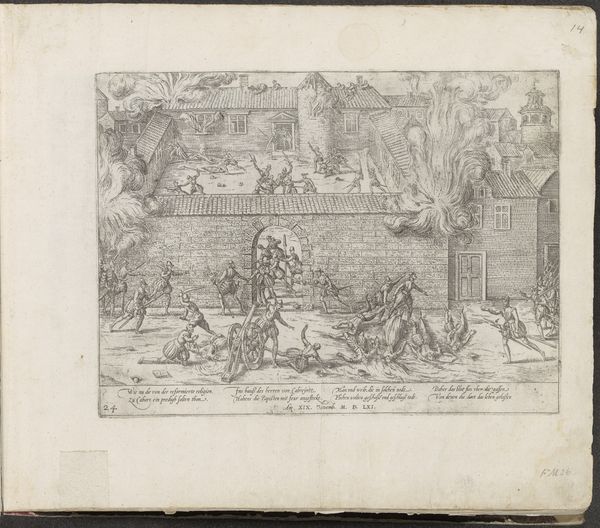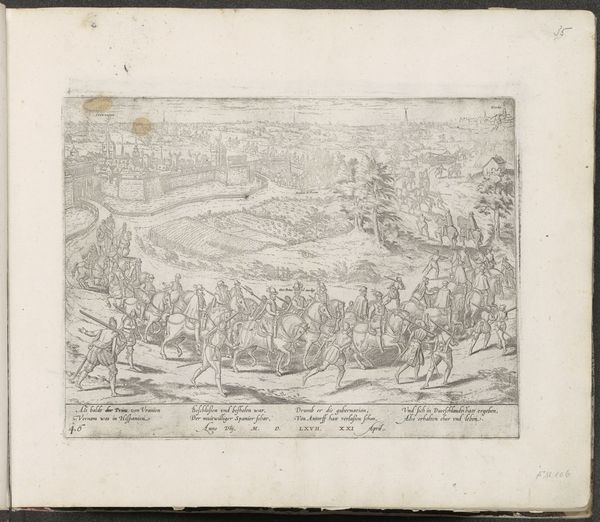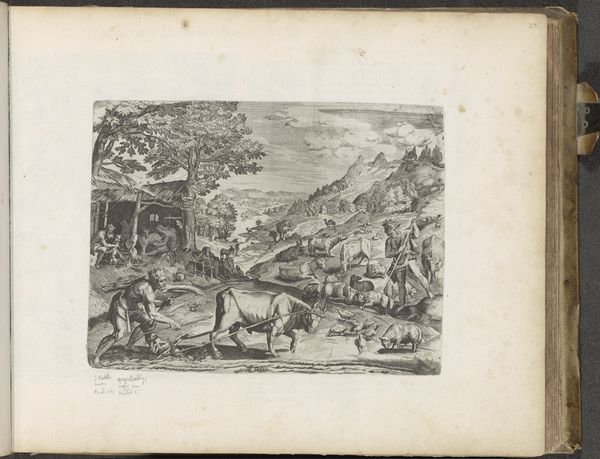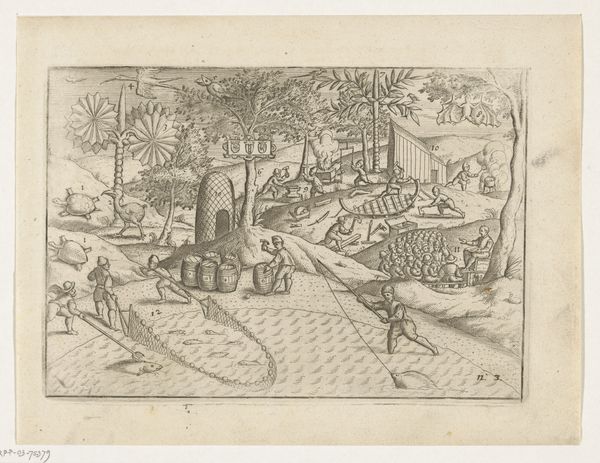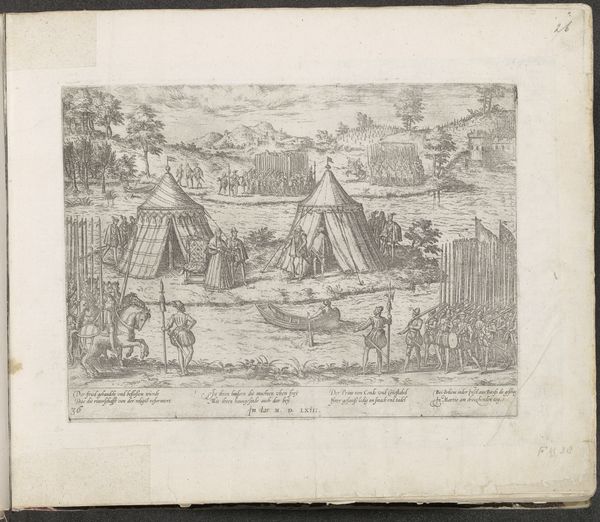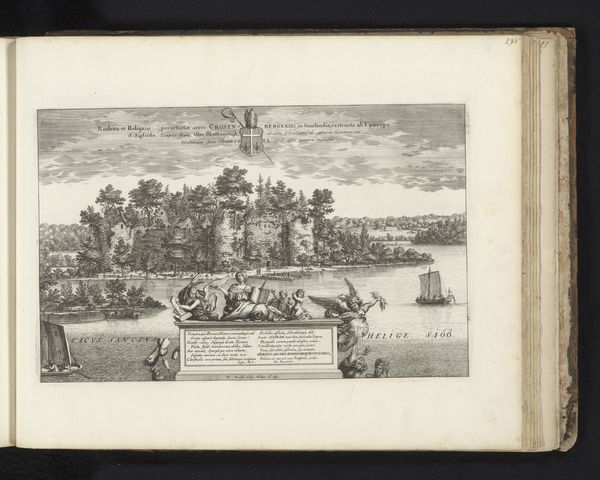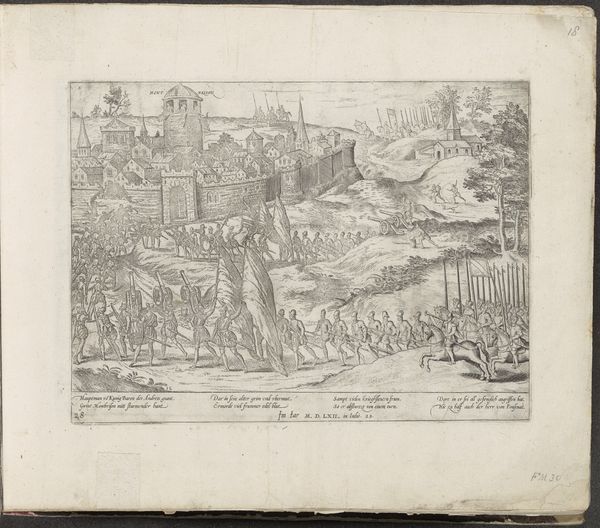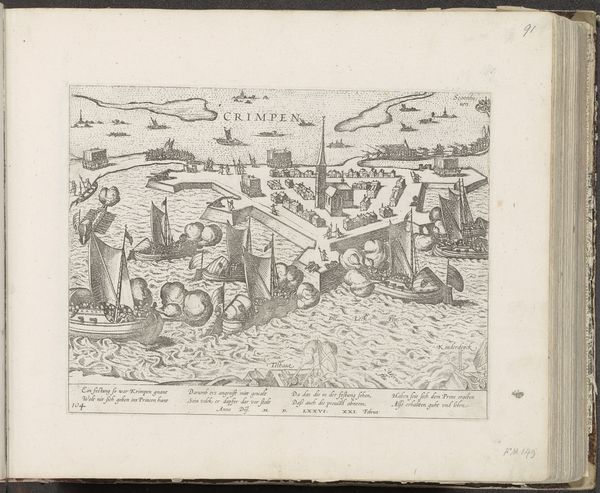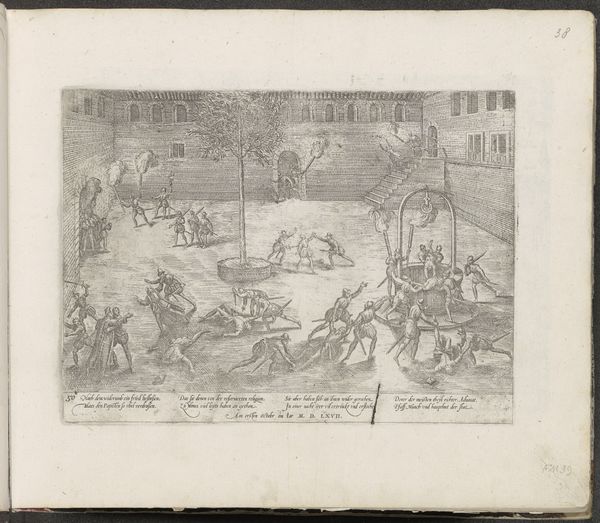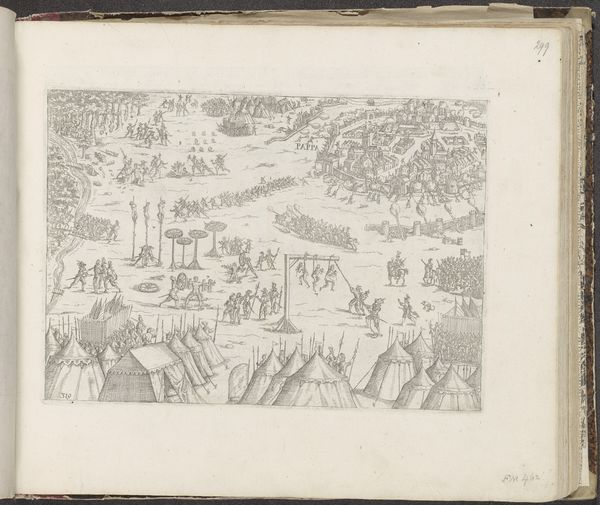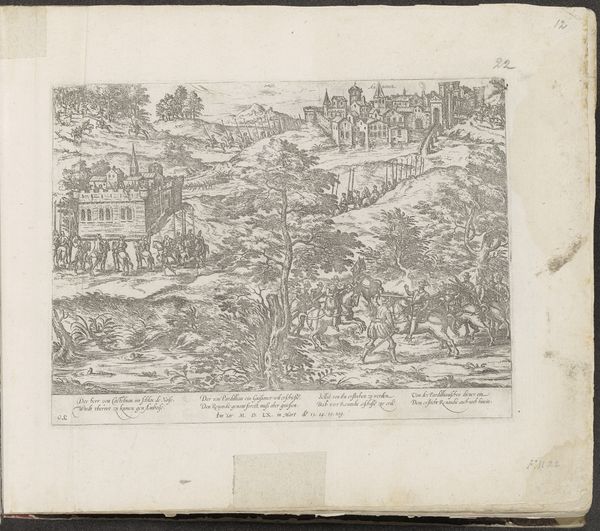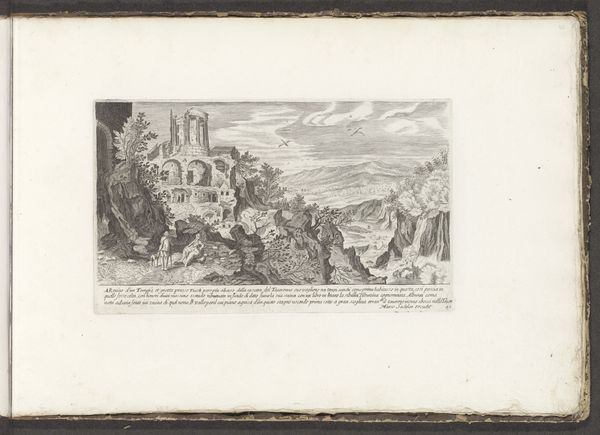
print, engraving
#
medieval
#
narrative-art
# print
#
figuration
#
11_renaissance
#
cityscape
#
history-painting
#
northern-renaissance
#
engraving
Dimensions: height 210 mm, width 281 mm
Copyright: Rijks Museum: Open Domain
Curator: This engraving is titled "Moord op de protestanten te Sens, 1562," or "Massacre of Protestants at Sens, 1562," created circa 1567-1571 by Frans Hogenberg. Editor: It’s chaotic! Bodies everywhere, figures wielding weapons… It's all rendered in these incredibly fine, precise lines of the engraving. You can almost feel the violence in its detail despite the distance of time. Curator: Indeed. Hogenberg’s prints served an important political function. Consider that this was created during a time of immense religious conflict in Europe. Prints like these were disseminated widely. Editor: The making and distribution of the work itself— the labor that goes into this and its consumption, that’s the key. You get to thinking, what sort of labor practices where at play with print making in the northern Renaissance? Was the cost of making the artwork cheap enough that even those with a low income where able to obtain copies? Curator: That’s an excellent point. It’s about controlling the narrative. The images and text fueled the religious wars and shaped public opinion. Look how the artist chose to portray the victims. Editor: It's compelling. The level of detail he manages to capture with such a demanding medium - and that must have been physically laborious to produce in those large quantities. It’s a grim topic that yields rich observations on labor and suffering in Renaissance Europe. Curator: Absolutely. This print not only presents a visual record but also acted as propaganda, influencing perspectives during a turbulent historical era. Editor: Reflecting on this piece, I’m struck by the connection between the brutal scene depicted, the labour of the printing, and its wider consumption, shaping history through imagery and tangible objects. Curator: It's a stark reminder of how art, particularly in its accessible forms, can actively engage with social tensions and leave a lasting imprint on historical memory.
Comments
No comments
Be the first to comment and join the conversation on the ultimate creative platform.
